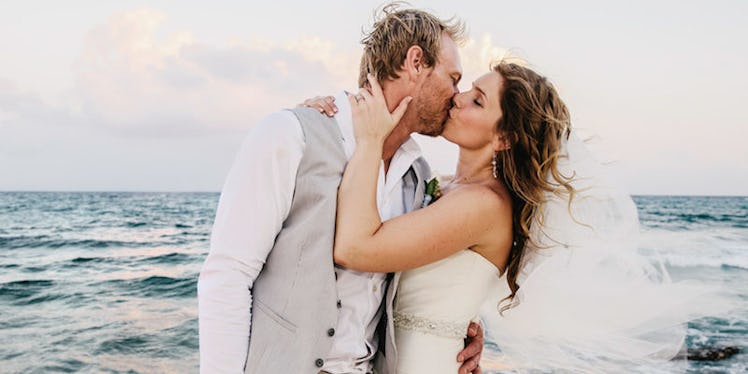
How Emojis Have Played Into Our Everyday, Face-To-Face Conversation
A few drinks in, and I’m miming a flamenco dancer. I mean, I’m not actually doing the flamenco, but merely positioning myself to look like the one I just received in a text.
It’s not news that the Internet has changed the way we communicate. Messages are relayed instantaneously and through a spectrum of acronyms, abbreviations and emojis — like the one I'm mimicking.
Emojis are a staple in my iPhone repertoire. From Instagrams to tweets to texts, there is rarely a time my thumbs don’t click for that coveted emoji keyboard.
Who would have thought that I’d eventually be using emojis to express myself outside the realm of my glowing, handheld screen?
Standing there, on the corner of Delancey and Ludlow, I found myself in some kind of chicken-or-the-egg cyber world scenario. Who came first? Me, a “flamenco dancer” or the flamenco dancer emoji on my phone?
I’m almost certain that human action came before emojis, but it seems that their symbols have sparked a third dimension of communication in which we copy small digital pictures, which first copied us.
People consider emojis to be a vital part of communication, whether they know it or not. In fact, they're so vital that when people want emojis that don't yet exists, they petition for them, sometimes even starting movements.
As PolicyMic pointed out in June, “emojis of color” are completely absent from the wide digital selection, but not absent from outspoken individuals who have gone so far as to protest for emoji equality.
Also, the characters have become such an integral part of the way we text that people have even written guidelines on how to use them properly.
But before emojis, there were unspoken rules when it came to general cyber communication: Don’t text, email or Facebook news of deaths or other important events to your closest friends and family. Always double-check that you are sending your message to the correct person.
Don’t text in all caps unless you’re yelling (ahem, Dad). Write as clearly as possible to leave little room for interpretation. You’ve seen some blunders gone viral.
Still, the lingering adage, “It’s not what you say, but how you say it” proves that the way we communicate is often more sophisticated than we can put in text.
Hence, the third dimension of communication in the cyber world: small digital pictures and pictorial symbols — the birth of the emoji and its comparables.
I use emojis all of the time. Here are two prime examples:
1) My best friend is coming to visit
Confetti and more confetti, face with one eye closed and tongue out, arbitrary hands praising the sky (or possibly, raising the roof?), clapping hands, twin blondes dancing in synchronization, countless colored hearts
2) Trying to make plans for the night
Wine, girl in pink with sassy outstretched hand, slot machine, question mark
Emojis evolved from simple colon-and-parenthesis combinations (known as “emoticons”) into full-fledged expressions. What’s more is that, at least in my life, they have evolved from on-screen symbols to real-life actions.
I recently embarrassed myself in a conversation and instead of redeeming myself using, you know, words, I impersonated my favorite emoji and covered my eyes like that wise monkey often does.
It then dawned on me that I have embraced emoji usage to the extreme extent that it has killed my ability to actually articulate myself. Often, I struggle to speak clearly; I fumble on my words like Austin Powers does and find myself wishing I could type the face of an emoji rather than actually explain how I feel in a given moment.
What do you think of your brother’s new girlfriend? A few images come to mind: covering my mouth with my hands (same wise monkey), covering my mouth with a surgical mask or gritting my teeth and closing my eyes. All emojis.
What does it all mean?
I recall the days of texting “less than three” using the advanced “T-9 feature” on my bejeweled flip-phone to tell someone I loved him or her. I remember typing “lol” after every sentence on AIM and still, I wonder what it all means? How have these shortcuts changed how I communicate?
Emojis give us a much needed third dimension of communication. They enhance how we communicate in virtual reality and help eliminate vague interpretations. They have also changed how we act with one another in person.
Some of us are more likely to express how we actually feel, while others use their hands more often when they talk; the way speech coaches always wanted them to do.
Then, there are people like me, who respond to awkward situations with an emoji-like faces of gritted teeth and a Ricky Bobby impersonation: “I’m not sure what to do with my hands.”
What else is a girl to do when she just can’t find the words?
Photo Courtesy: Tumblr